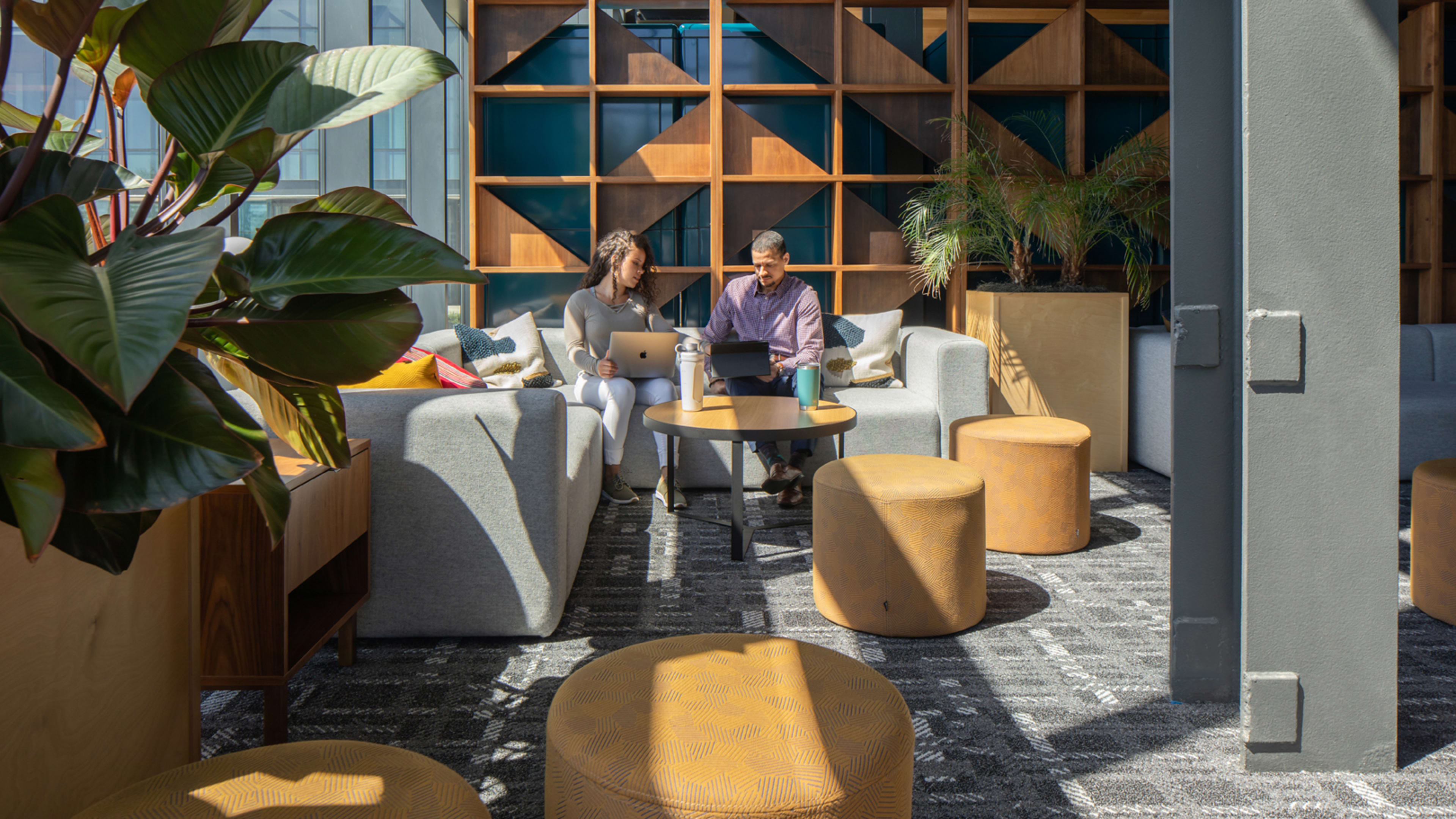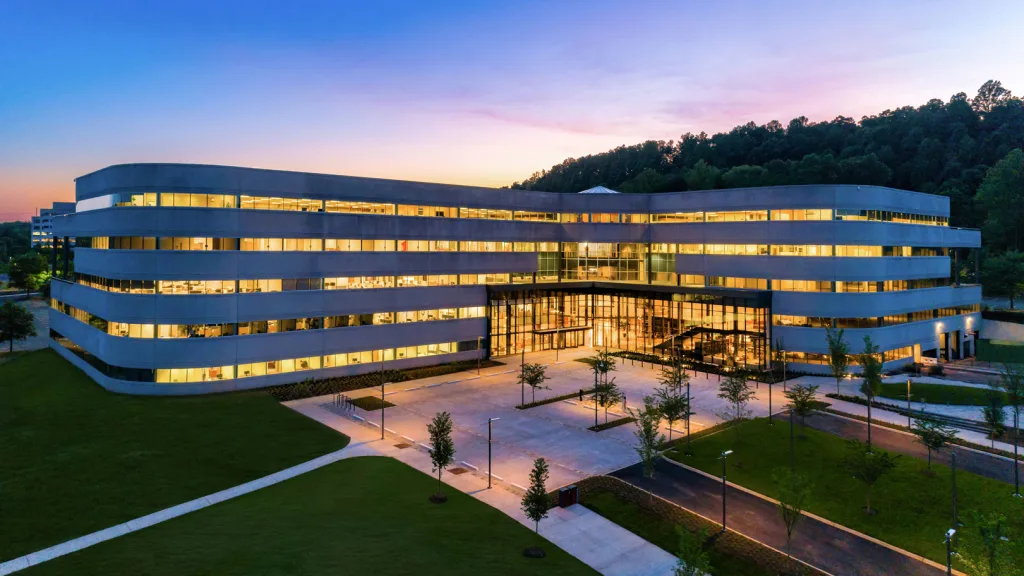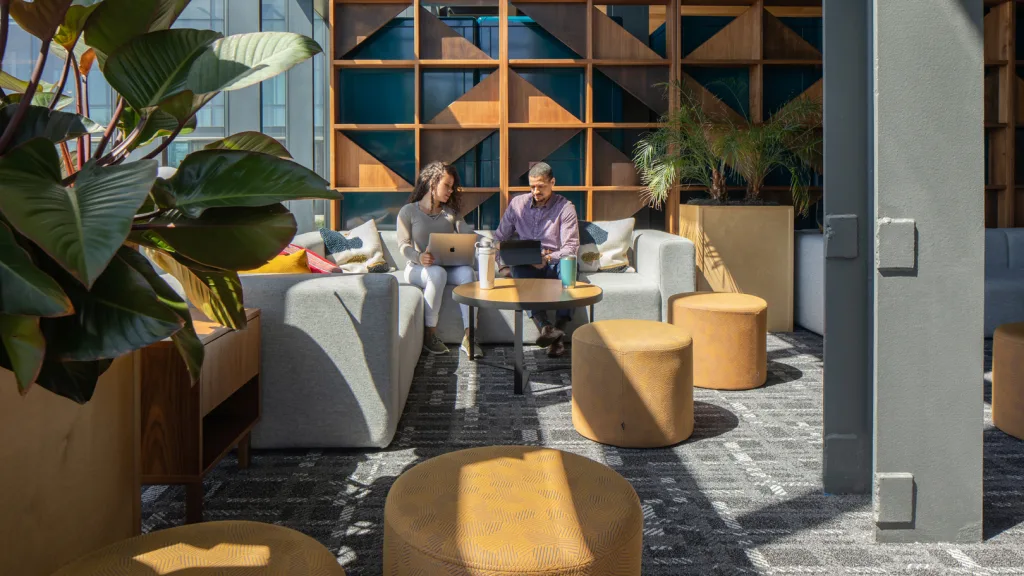When it was built in the 1980s, Connell Corporate Park in Berkeley Heights, New Jersey, was the typical office park: a cluster of Class A office buildings surrounded by parking lots right next to the interstate and within an hour’s drive of the big city next door, New York. In what would grow to 1.5 million square feet of offices on a 185-acre property, Connell Corporate Park became home to companies like AT&T, AIG, L’Oréal, and hundreds of smaller outfits over the years. It was the sort of anonymous officescape you might find a certain distance from any major city in America, where the cars flowed in like the tide, and people went to work.
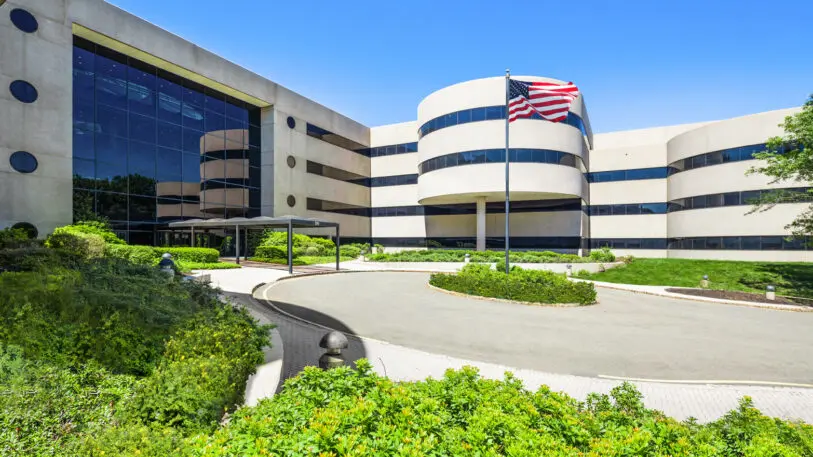
But Shane Connell, the fourth generation head of the Connell Company, which developed the office park, believes that people don’t want to just go to work anymore. The 9-to-5 single use office building is dead, and an office park full of them is no better off, he argues. That’s why he’s leading the $400 million redevelopment of Connell Corporate Park into The Park at Berkeley Heights, a mixed use walkable campus with residences, restaurants, a gym, a health clinic, a network of publicly accessible parks, a social director and, yes, many, many offices.
“The master plan is to build a place that’s a neighborhood, where you can get to everything within 15 minutes by bike or car on our campus, and then support that with really great amenities, technology, programming, design, culinary, and wellness,” says Connell.
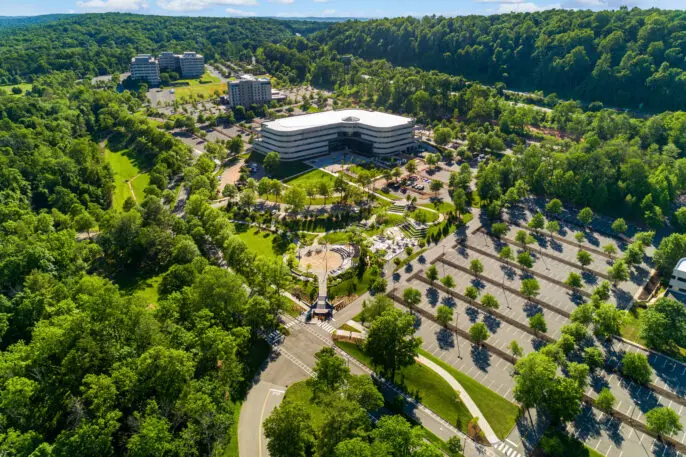
Influenced by the amenity-rich corporate campuses of tech companies like Google and Facebook, the redevelopment has been in the works since 2017, and Connell says the COVID-19 pandemic has only reinforced the need for change. The first of the five office buildings on site has been renovated to replace cubicle-cut office suites with more flexible and shared work areas, lounges, and leisure-focused spaces like a game room and a cafe and bar. Another building will be similarly “amenitized” later this year, and ground will break next year on 100,000 square feet of retail and 350 residences. “We’re trying to turn an adult workplace into more of a collegiate feel,” he says.
Whether these kinds of amenities are really what workers want, especially after many have spent more than a year working from home, is still an open question. According to a recent study of workers aged 21 to 34, the highest ranked workplace perk was being treated respectfully by managers. Nonetheless, companies, and the owners of office buildings who lease to them, are beginning to pay much closer attention to what an office has to offer beside just being a physical place to work.
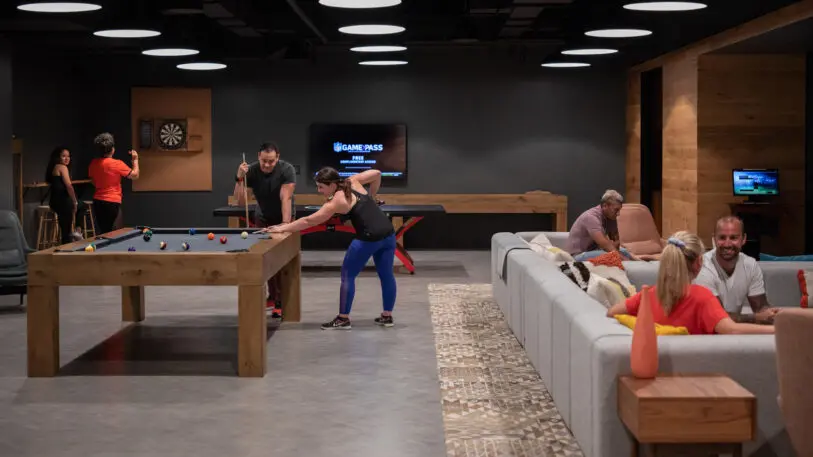
The former Connell Corporate Park is not alone. Across the U.S., suburban office parks are being reconsidered and redeveloped to shift away from the office-only model and bring in a greater diversity of uses, including residential, retail, and the kinds of services and public spaces that can appeal equally to someone driving in to work, walking over to grab lunch, or driving in for a dinner date. These redevelopment projects, even amid the pandemic’s thorough transformation of workspaces, are charting a new path for the corporate parks and office complexes of suburban America. If done right, vast swaths of the country that were built with only work in mind could be finding themselves teeming with a more diverse and economically sustainable type of life.
–
The modern suburban office park has its roots in the bucolic suburban corporate campuses of the 1950s. “It was the height of the Cold War, back when the government actually paid companies to do research. So these were R&D campuses,” says Ellen Dunham-Jones, a professor of architecture at the Georgia Institute of Technology and co-author of Case Studies in Retrofitting Suburbia: Urban Design Strategies for Urgent Challenges. “The assumption was that scientists would have epiphanies best if they were in a single person office with a view of undisturbed nature.” The design of these offices and campuses were very heavy on the green space, with acres of land on their peripheries, and miles separating them from the perceived chaos of the city.
“Today the emphasis is much less on research than on innovation: How do we get something new, really quickly to market? And the assumption is it’s those spontaneous conversations at the water cooler or coffee shop or the bar that are what really spawn that,” she says. (Evidence of this phenomenon is lacking, however.) “There are a lot of these big corporate campuses that have been essentially abandoned.”
The office-in-the-park ideal from the 1950s gradually morphed into a more cookie-cutter development model that by the ’70s and ’80s took the form of bland office buildings plopped alongside commuting corridors and surrounded by parking lots. That model is falling far out of favor, and suburban office parks are finding it difficult to compete in the market. According to a 2015 report from commercial real estate company Newmark Grubb Knight Frank, between 14% and 22% of the suburban office park inventory in the U.S. could be considered “obsolete” – with “incurable” issues like undesirable building and floor sizes, and low-demand locations, particularly in buildings from the 1980s and earlier. These fading suburban offices represented upwards of a billion square feet, or 7.5% of all office space in the U.S. back in 2015. The amount of aging space has only gone up since then.
The business world has changed, but so have the desires of the younger generations that make up an increasingly large segment of the professional class. Marc Fairbrother is managing principal at Callison RTKL, an architecture and urban planning firm with a deep portfolio of work in offices and commercial development, and he says younger workers are increasingly choosing where to work based on what companies can offer them – not just in compensation but in the experience of the workplace. “They don’t want to just go to work and sit heads down. They want to collaborate,” Fairbrother says.
Companies are paying attention and trying to create livelier, more flexible workplaces, and that’s driving decisions on where they choose to lease their office space. The office parks that don’t adapt will begin to lose tenants and see their leasable rates go down, Fairbrother says. Many already are.
Fairbrother recalls a former client that owned a large and aging suburban office park outside of Washington D.C., where leases were declining quickly. In just a few years the cost per square foot to lease had gone from around $60 to around $30. “There were no amenities, no connection to transit, no lifestyle components,” Fairbrother says. He pointed all this out to the client in 2016 and suggested they might want to think about what kind of new or different uses the site could accommodate to attract newer companies and the often younger workforce they employ. The client declined.
A few months later, though, the client reached back out and agreed to examine the alternatives. “They realized it wasn’t going to trend up anytime in the near term,” Fairbrother says. He led a study of the site and made some recommendations on how the space could be reframed from office only to a mixed use suburban town center, with a lively central plaza, a shuttle to the nearest transit station and the ability to build valuable residential buildings on site. The client agreed and went through the yearlong process to get the zoning of the site changed and the permits to build the mixed use community, and then put the office park on the market. It sold in 2019 and the proposed redevelopment is pending.
—
Aside from the sheer cost of redevelopment, which can range from tens to hundreds of millions of dollars, an office park makeover takes more than a savvy owner or a demanding cohort of young workers. Zoning is frequently a hurdle for these kinds of redevelopments, as many suburban office parks are office-only because that’s all the zoning in those suburbs allows. Some places are loosening their rules to make the transition easier. “Communities are beginning to recognize that if they’ve got a lot of vacancies in a big office park, they can be proactive and rezone,” Dunham-Jones says.
That kind of developer-friendly move can work. In White Plains, New York, a former IBM office complex built in 1964 is in the midst of being redeveloped with three new residential buildings on the 70-acre site. The NRP Group, a multifamily housing developer, is leading the project, in coordination with RPW Group, which owns the office building. Jonathan Gertman, vice president of development at the NRP Group, says the project only materialized because the city rezoned the site. “These large opportunities that have some form of approval or at least have been planned by the community are pretty hard to come by,” Gertman says.
The project, which broke ground last year, will bring about 300 market rate one- to three-bedroom apartments to the site, as well as a pool, an outdoor lounge area and a park-like landscape between the residences and the offices nearby. Gertman says blending a residential cluster into what had previously been an office park requires some finesse. A physical separation between the offices and the residential buildings was created by siting them on spaces that have a 10 foot change in elevation. For those living on one side of the project and working on the other, the visual separation is intended to mark a break between work and life. Elevation difference or not, Gertman expects that the people who work in the former IBM building won’t necessarily be the people who live in the apartments next door. “We’re not counting on it for success,” he says.
For some suburban office park redevelopments, the goal is to create an all-in-one community where people can live, work and play without having to leave. Developer Ralph Zucker calls this a “metroburb.” “It’s a small metropolis in a great suburban location and it gives you everything you would have in the downtown of a metropolis but in a small, compact suburban setting,” he says.

His first attempt at building such a thing has proven to be successful. In Holmdel, New Jersey, Zucker’s company Somerset Development led the redevelopment of the former corporate campus of Bell Labs, an Eero Saarinen-designed mid-century icon and home to one of the leading corporations of much of the 20th century. Long vacant, the building is a massive 2 million square foot rectangular block of offices looking in on expansive atriums and out on an oval of parking lots and artificial lakes. Zucker purchased the building in 2013 and invested about $200 million refashioning it into Bell Works, a kind of covered main street, with offices and retail filling its sides and a mall-like walkway and courtyard in between. The building is open to the public every day from 6 a.m. to midnight.
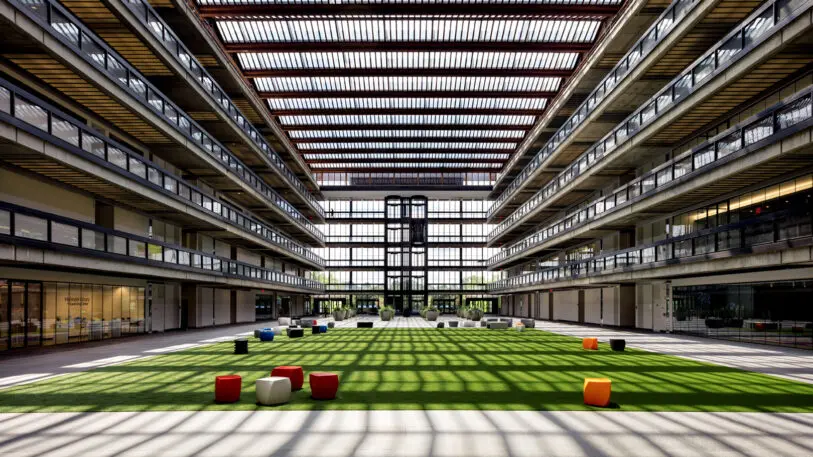
“It’s got everything from a Montessori day care to a dentist to a golf simulator to an escape room, and of course food, food, food and food,” Zucker says. There’s a food hall in the building and a farmer’s market every Wednesday, in addition to an urgent care facility, a plastic surgeon, a convenience store, and a public library. The space was 75% leased before the pandemic, Zucker says, and it’s grown to about 90% now. Two residential developments border Bell Works. One has 50 single family homes, and the other has 180 townhouses for residents 55 and over. Somerset Development has other residential projects in the pipeline in the surrounding area. “We felt intuitively that coming out of the pandemic, suburbia will be stronger,” he says. “And that’s exactly what we see happening.”
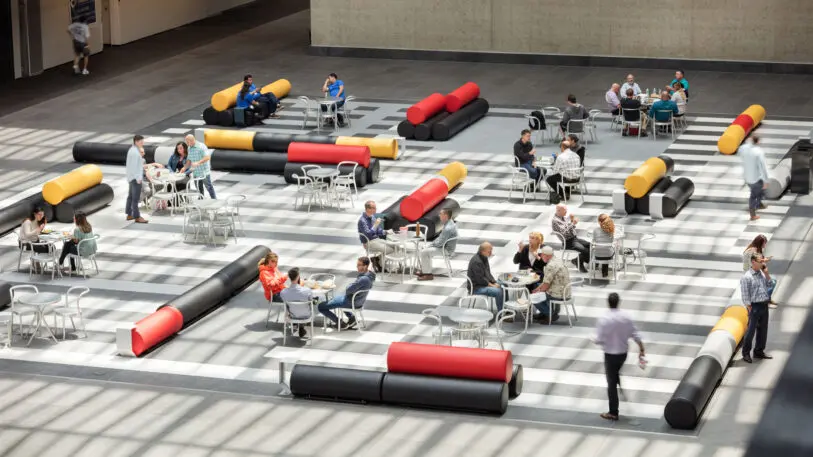
The key, he says, is providing the urban variety people want in a suburban setting. “Suburban buildings would give you this ersatz, fake life. A coffee shop that was only populated by the people in the building. A cafeteria that’s only open to people in the building. And the only people you see are people who work in the same location,” Zucker says. “By bringing life to Bell Works and opening up the metroburb to the public, we’ve created a place that people want to work, and that can attract and retain talent.”
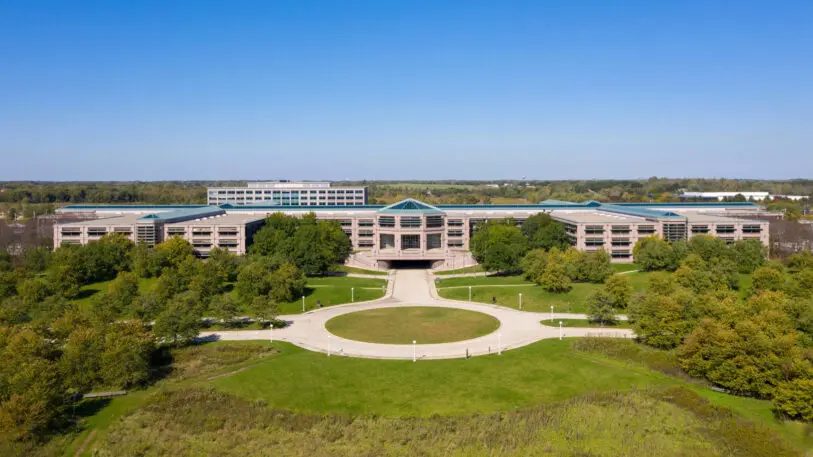
Zucker is now expanding this “metroburb” model, with a new Bell Works-style project under construction in Hoffman Estates, Illinois, about an hour outside of Chicago. The project is being built on a sprawling 150 acre former AT&T office campus with 1.2 million square feet of offices, and will include a “downtown style” walkable village, conference space, and up to 550 apartments and townhouses. The indoor pedestrian mall is about halfway finished.
This could be just the start. Zucker says the model is replicable, and he’s hoping to continue to expand to other suburbs in other parts of the country. “We are actively looking,” he says.
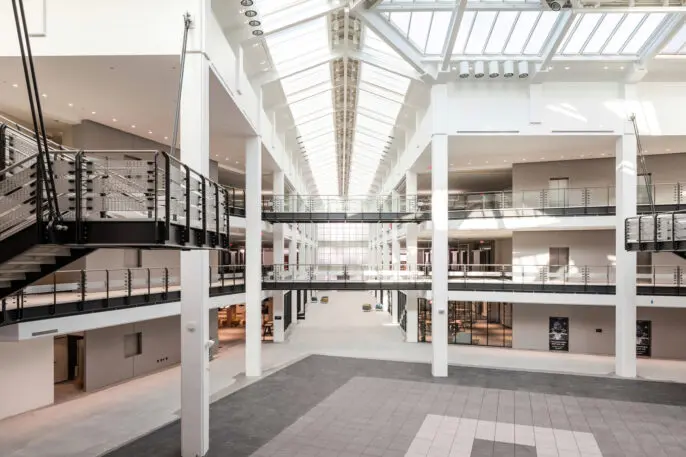
–
Not every suburban office park will be able to make this kind of transition. For developers, only certain types of office parks in certain locations will be viable potentials for a mixed use future, according to Ayoub Rabah, Chicago region president for Coldwell Banker Realty. “It depends a lot on the geography,” he says. Office parks near existing downtowns, even in small towns, may not be able to draw enough foot traffic to be economically sustainable. Office parks in the more sprawly suburbs – lots of residential, few places to shop – make better bets. “That’s where there’s a lot more opportunity for mixed use,” he says.
Connell, the developer of The Park at Berkeley Heights, says the goal of the mixed-use redevelopment isn’t to compete with the urbanity of New York, but to bring the things people love about the city closer to those who live and work in or near his suburban area. “For the people that are traditionally working in New York City, using the city for entertainment, for culture, for dining, instead of having to drive 30 minutes, driving 10 minutes is an alternative that they want to have,” he says.
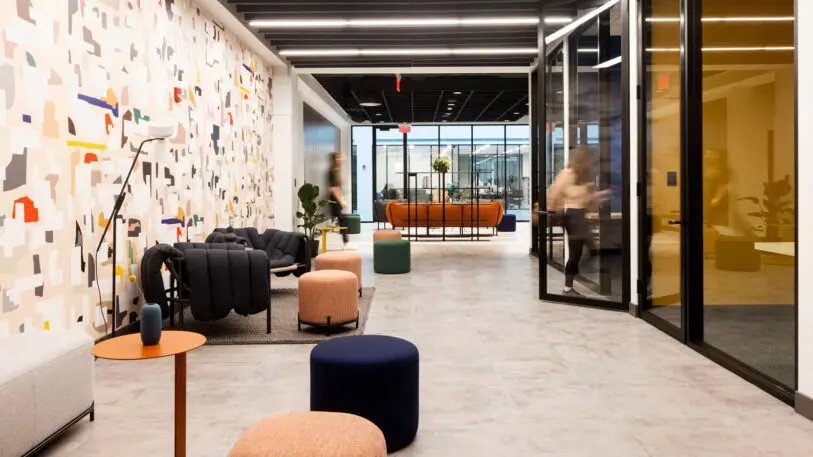
And though redevelopments like The Park at Berkeley Heights and Bell Works prioritize a pedestrian friendly, downtown-esque feel, these places are still situated out in the suburbs, and most visitors are likely to arrive by car.
Dunham-Jones, the Georgia Tech professor who tracks suburban retrofitting projects, says these projects raise questions about what type of development cities and regions really need, and whether urbanizing a suburban office park is countering or exacerbating sprawl. “If what we’re doing is creating all these little pockets of drive-to walkability, is that solving anything? Is it going to get us to complete sustainability? Absolutely not,” she says. “But the more we can take existing sprawl and at least create more polycentric nodes, we’re presumably reducing overall trip lengths and making a lot more internal trips walkable that would have been by car.”
Redeveloped suburban office parks are basically better than what they’re replacing, with the potential to create new centers of work, life, retail, and leisure in pockets of the country that have long had little but isolated office space on the fringes of their residential areas. Many office parks are beginning this transition, and many more are likely in the kinds of locations where such a redevelopment is possible. Some may have no other choice.
“There are not a lot of companies looking for 150-acre corporate campuses,” Rabah says. “Owners of buildings from the ’60s and ’70s, they need to rethink what the next 40 or 50 years will look like for their buildings, and that’s where mixed use comes into play.”
Recognize your brand’s excellence by applying to this year’s Brands That Matter Awards before the early-rate deadline, May 3.
